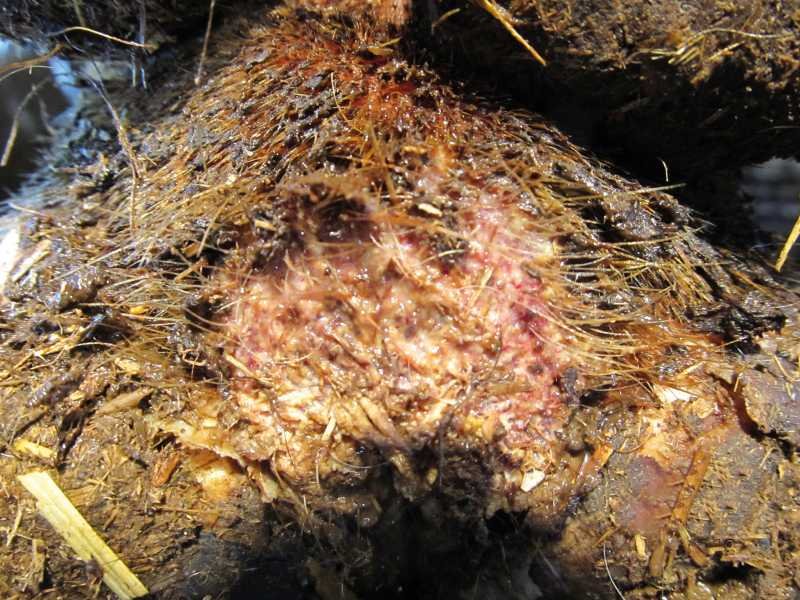Benefits of ketoprofen for treatment of symptoms associated with DD
Lameness is one of the most significant problems facing the dairy industry worldwide, having a major impact on cattle welfare, health and production, leading to substantial economic losses1. Lameness has been associated with reduced milk yield2, mastitis3, and infertility4 and has been reported to be prevalent in dairy herds in Europe and North America5, 6.
Within the UK, the average herd lameness prevalence (the number of animals affected at any one time) was recently found to be just under one third7 and digital dermatitis is one of the most frequently recorded diseases associated with lameness in dairy cattle8.
A new study9 has highlighted the benefits of using ketoprofen (Ketofen 10%®) for the treatment of pain and lameness associated with digital dermatitis (DD) in cattle.
During the study, 158 cows with active DD were randomly allocated to either the control group or the treatment group. All cows were treated with a topical application of oxytetracycline spray. The treatment group also received an intramuscular injection of Ketofen 10% (ketoprofen 3mg/kg). Cows were mobility scored just before they were treated and then again one week later.
The results indicated that animals in the control group were 2.57 times more likely to be lame at the second evaluation compared to those that received Ketofen 10%, however cows that were lame in the control group prior to treatment and did not receive Ketofen 10% were over 20 times more likely to remain lame a week post-treatment compared to cows that did receive Ketofen 10%. Interestingly, this same study showed a benefit in milk yield; on average, treated animals gave nearly 3kg more but the freshly calved cows, which were lame at diagnosis, gave over 10kg more!
Nick Bell MA, VetMB, PhD, PGCert Vet Ed, FHEA, DipECAWBM (AWSEL), MRCVS, veterinary surgeon and director of Herd Health Consultancy, comments: “We’ve widely recognised the importance of NSAIDs for treating claw lesions, which are primarily inflammatory conditions, but this study is the first real insight into how important NSAIDs are for any lesion, including digital dermatitis, particularly if the cow is showing signs of lameness. This research provides a clear welfare justification for giving NSAIDs to dairy cows with active digital dermatitis lesions, with significant milk yield benefits.”
“Digital dermatitis is undoubtedly a painful condition that can have a major impact on the welfare, health and production of cattle,” adds Katherine Timms BVetMed(Hons) MRCVS, ruminant veterinary advisor at Ceva Animal Health. “This study suggests that Ketofen 10% is beneficial for the treatment of lameness associated with active digital dermatitis lesions as it helps improve mobility scores and should be considered as part of a farm’s herd health plan.”
For further information on the study visit the BVA site. For information on Ketofen 10% visit the Wave Goodbyr to Pain site, the dairy farmers' guide to lameness in cattle.

References
- Willshire, J. and Bell, N.J., 2009. An economic review of cattle lameness. Cattle Practice 17(2):136-141.
- Amory JR, Barker ZE, Wright JL, Mason SA, Blowey RW, Green LE. Associations between sole ulcer, white line disease and digital dermatitis and the milk yield of 1824 dairy cows on 30 dairy cow farms in England and Wales from February 2003-November 2004. Prev Vet Med. 2008;83(3–4):381–91.
- Peeler, E. J., M. J. Otte, and R. J. Esslemont 1994. Inter-relationships of periparturient diseases in dairy cows. The Veterinary Record 134.6:129-132.
- Huxley JN. Impact of lameness and claw lesions in cows on health and production. Livestock Sci. 2013;156(1–3):64–70.
- Dippel, S., et al 2009.Risk factors for lameness in freestall-housed dairy cows across two breeds, farming systems, and countries. J. Dairy Sci. 92.11: 5476-5486.
- Solano L. et al 2016. Prevalence and distribution of foot lesions in dairy cattle in Alberta, Canada. J Dairy Sci. 99(8):6828–41.
- Randall L. et al 2019. Lameness prevalence in a random sample of UK dairy herds. The Veterinary Record, 184(11): 350.
- Bell N. and Vanhoudt A. 2020. Treatment and control of DD in dairy cattle. In Practice 42(10):554-567
- Kasiora K. et al. 2021 Evaluation of the use of ketoprofen for the treatment of digital dermatitis in dairy cattle: A randomised, positive controlled, clinical trial. Vet Rec. 2021;e977. https://doi.org/10.1002/vetr.977.
Ketofen® 10% solution for injection contains ketoprofen 100mg/ml. Legal category: UK POM-V. Please refer to the product SPC, data sheet, pack leaflet or the veterinary prescriber for more information.
Use medicines responsibly (www.noah.co.uk/responsible)Ceva Animal Health is a subsidiary of Ceva Santé Animale, a global veterinary health company focused on the research, development, production and marketing of pharmaceutical products and vaccines for pets, livestock, pigs and poultry. For more information visit www.ceva.co.uk.
- 1st May 2022
